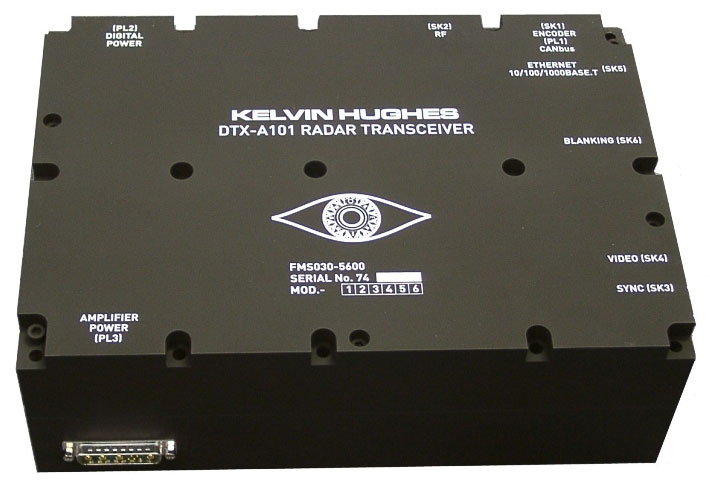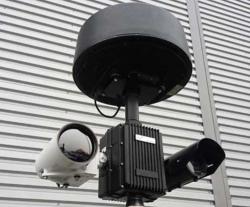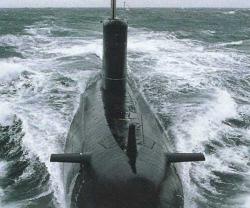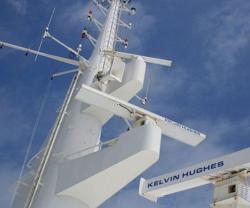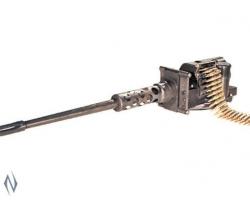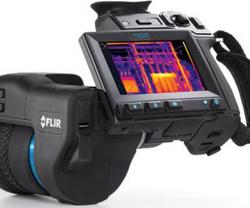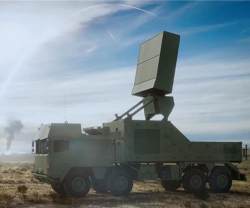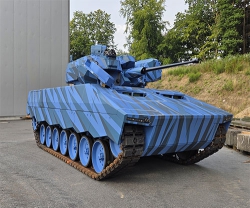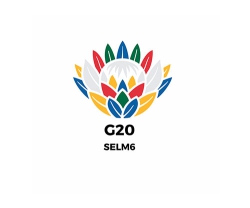Kelvin Hughes Unveils Sharpeye™ Upmast Radar System
12.09.2013 Products
Kelvin Hughes, a world leader in the design and supply of navigation and surveillance systems, announces the launch of the world’s first carbon composite housing for upmast navigation and situational awareness radar.
The new housing has been designed for the SharpEye™ radar system which itself represents a technological “first” from Kelvin Hughes. A significant advance on current marine navigation radar technology, SharpEye™ is a solid state system that removes the need for a magnetron. With its coherent transmission and Doppler processing, it is able to separate targets from clutter resulting in greatly improved situational awareness even in adverse weather conditions.
Unlike downmast magnetron systems, SharpEye™ is an upmast system resulting in virtually no signal loss in the interconnecting waveguide between the antenna and transceiver. Now, with the introduction of the composite carbon housing, in place of the heavier aluminium versions, the weight of the complete system is the lightest available on the market.
A number of other innovative features have been incorporated in the new design, including a profile that mimics that of stealth ships resulting in a reduction of approximately 90% in the Radar Cross Section (RCS) of previous SharpEye™ upmast turning units.
The components inside the unit have also been improved. The use of a synchronous motor has removed the need for a gearbox, with the antenna rotation rate being controlled electronically. Also, all components are now Line Replaceable Units (LRUs). However, with no magnetron and no gearbox, the new system has a greatly reduced maintenance requirement for which no specialist training is required.
In addition, the use of the latest GaN transistors enables more energy to be transmitted without compromising the overall low power benefits of SharpEye™. An increase from 200W to up to 300W of peak power ensures enhanced target detection whilst still resulting in a very low probability of ESM systems detecting the radar signature of SharpEye™.
Because the new system is so light, it can be installed simply, quickly and safely. The antenna can be attached to the turning unit at ground level and the entire unit lifted on three removable lifting bolts into position on the ship’s structure in one operation. Just three sealed electrical connectors need to be plugged into the housing connection sockets for the radar to become operational.
Russell Gould, Kelvin Hughes’ Chief Executive, commented: “The development of the new composite carbon fibre housing for the SharpEye™ system is very much in keeping with the longstanding tradition of Kelvin Hughes for mould-breaking innovation. We’re looking forward to DSEI 2013 where we can demonstrate to an international audience the significant benefits we have added to an already highly advanced radar system.”
The new housing has been designed for the SharpEye™ radar system which itself represents a technological “first” from Kelvin Hughes. A significant advance on current marine navigation radar technology, SharpEye™ is a solid state system that removes the need for a magnetron. With its coherent transmission and Doppler processing, it is able to separate targets from clutter resulting in greatly improved situational awareness even in adverse weather conditions.
Unlike downmast magnetron systems, SharpEye™ is an upmast system resulting in virtually no signal loss in the interconnecting waveguide between the antenna and transceiver. Now, with the introduction of the composite carbon housing, in place of the heavier aluminium versions, the weight of the complete system is the lightest available on the market.
A number of other innovative features have been incorporated in the new design, including a profile that mimics that of stealth ships resulting in a reduction of approximately 90% in the Radar Cross Section (RCS) of previous SharpEye™ upmast turning units.
The components inside the unit have also been improved. The use of a synchronous motor has removed the need for a gearbox, with the antenna rotation rate being controlled electronically. Also, all components are now Line Replaceable Units (LRUs). However, with no magnetron and no gearbox, the new system has a greatly reduced maintenance requirement for which no specialist training is required.
In addition, the use of the latest GaN transistors enables more energy to be transmitted without compromising the overall low power benefits of SharpEye™. An increase from 200W to up to 300W of peak power ensures enhanced target detection whilst still resulting in a very low probability of ESM systems detecting the radar signature of SharpEye™.
Because the new system is so light, it can be installed simply, quickly and safely. The antenna can be attached to the turning unit at ground level and the entire unit lifted on three removable lifting bolts into position on the ship’s structure in one operation. Just three sealed electrical connectors need to be plugged into the housing connection sockets for the radar to become operational.
Russell Gould, Kelvin Hughes’ Chief Executive, commented: “The development of the new composite carbon fibre housing for the SharpEye™ system is very much in keeping with the longstanding tradition of Kelvin Hughes for mould-breaking innovation. We’re looking forward to DSEI 2013 where we can demonstrate to an international audience the significant benefits we have added to an already highly advanced radar system.”
Previous PostThales Launches SOPHIE Lite Surveillance System
Latest news
Latest events
DSEI 2025
09 - 12 Sep 2025Excel, London - United KingdomCounter UAS Middle East & Africa 2025
16 - 17 Sep 2025Amman - JordanIntersec Saudi Arabia
29 Sep - 01 Oct 2025Riyadh International Exhibition & Convention Centre - Saudi ArabiaDubai International Air Chiefs’ Conference (DIACC 2025)
16 Nov 2025Atlantis, The Palm Dubai - United Arab Emirates

